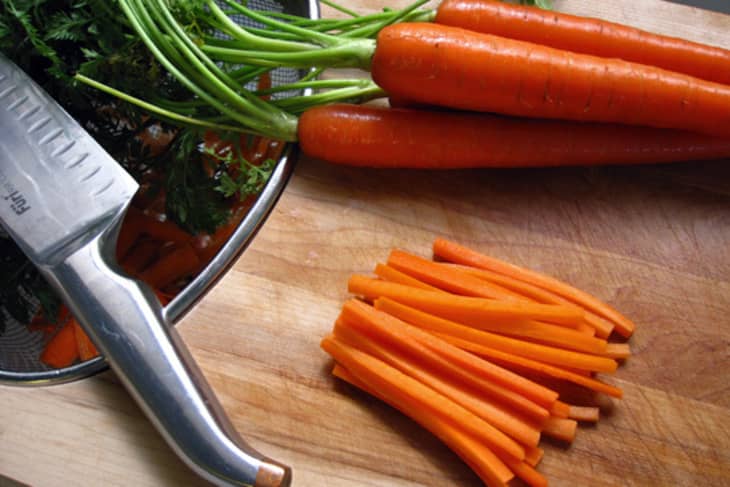How To Blanch Vegetables

Along with steaming, blanching vegetables is a basic technique every cook should know. Briefly boiled and then plunged into ice water, these bright and tender-crisp vegetables may be used in crudité platters, salads, sushi rolls, and stir fries, or refrigerated or frozen for later use.
What is Blanching?
Blanching is a classic technique that involves quickly cooking food in boiling water then dunking it in ice water to stop the cooking process. By helping to block certain enzymes blanching can help your veggies to retain their flavor, color and texture. Blanching is useful if you’re relying on quick-cooking methods like sautéing, and it’s also a crucial step before freezing vegetables.
How To Blanch Vegetables
Nutritional Info
Ingredients
- Vegetables
- Water
- Ice
- Salt
Equipment
Large bowl
Slotted spoon
Plate lined with a cloth or paper towel
Large pot
Cutting board and knife
Instructions
Have ready a large bowl of ice water (known as an ice bath), a slotted spoon, and a plate lined with a cloth or paper towel.
Bring a large pot of water to boil over high heat.
Meanwhile, prepare the vegetables. Doing this just before blanching prevents oxidation. Cut them into uniform pieces to ensure even cooking.
Just before blanching the vegetables, add couple of tablespoons of salt to the boiling water. Salt helps to maintain color and improve flavor, but it may be omitted if you wish.
Add the vegetables to the pot in small batches so that the water continues to boil. If blanching more than one type of vegetable, blanch each one separately and blanch lighter colored ones first, as darker colored ones will tinge the water and subsequent vegetables.
After about 30 seconds, test for doneness. Remove one piece, dip it into the bowl of ice water, and taste. Keep tasting every 30-60 seconds until the vegetables are cooked to your liking. Most vegetables take between 2-5 minutes.
When the vegetables are done, quickly remove them from the boiling water with a slotted spoon and plunge them into the ice bath to stop the cooking process. (This is called "shocking.")
When the vegetables are completely cool, remove them from the ice bath and drain on the towel-lined plate.
Recipe Notes
To cover or not to cover the pot? See Blanching Veggies with the Lid On or Off: Does It Make a Difference?
(Images: Emily Ho)
